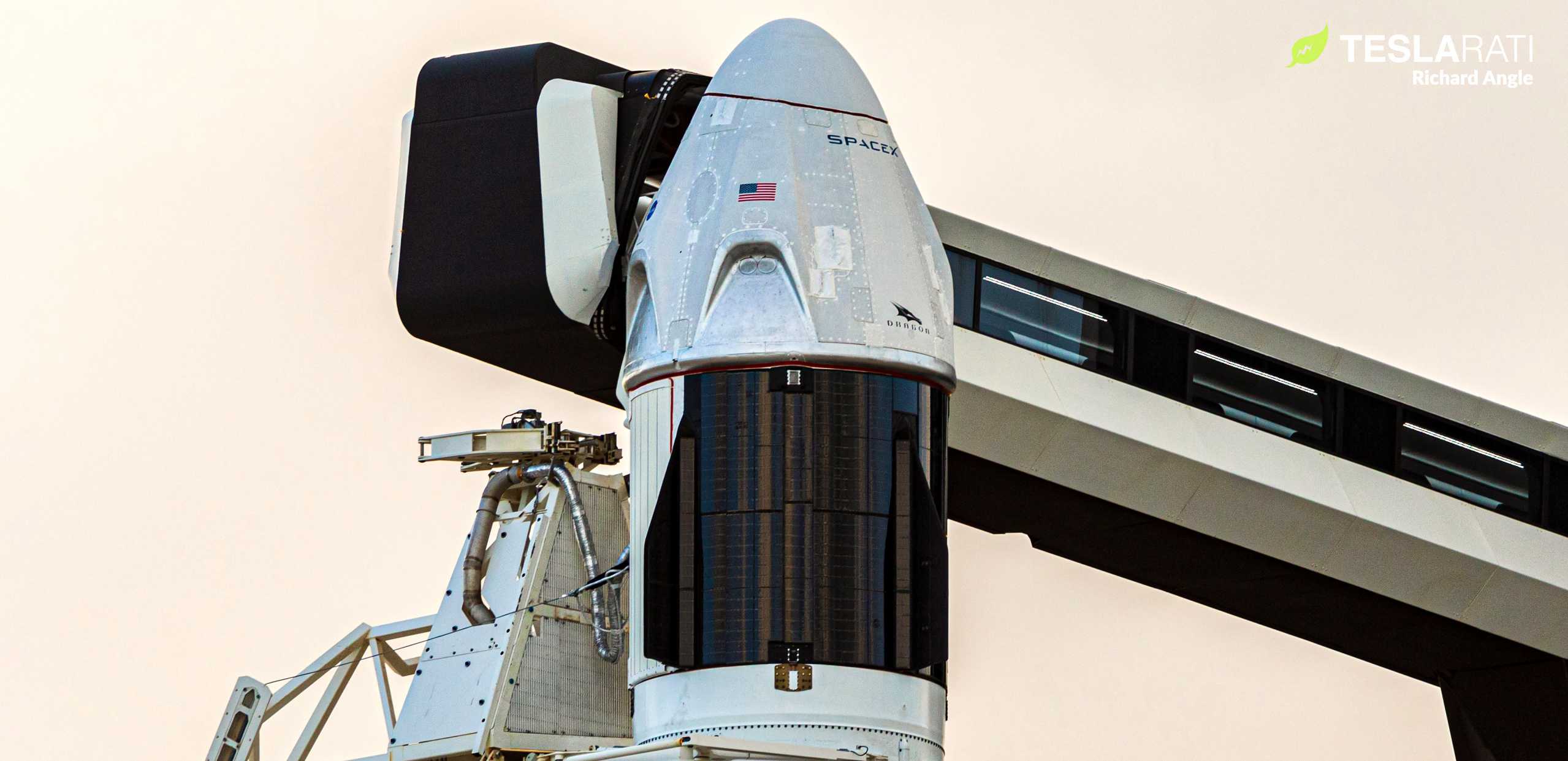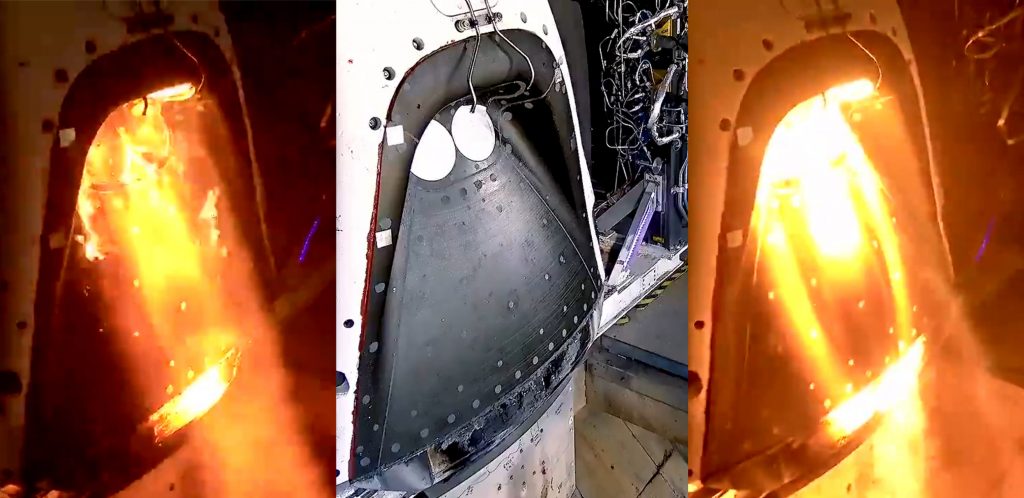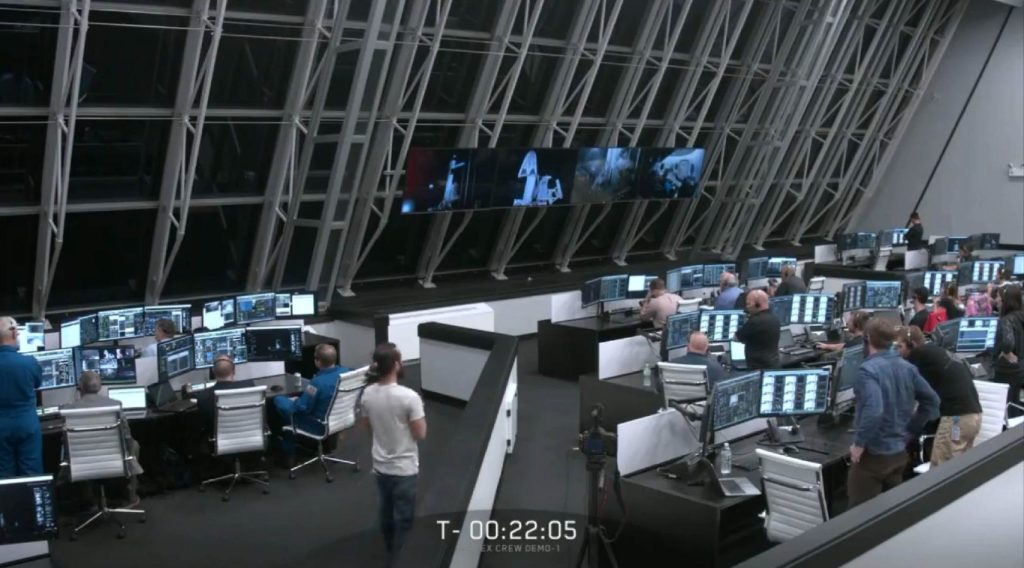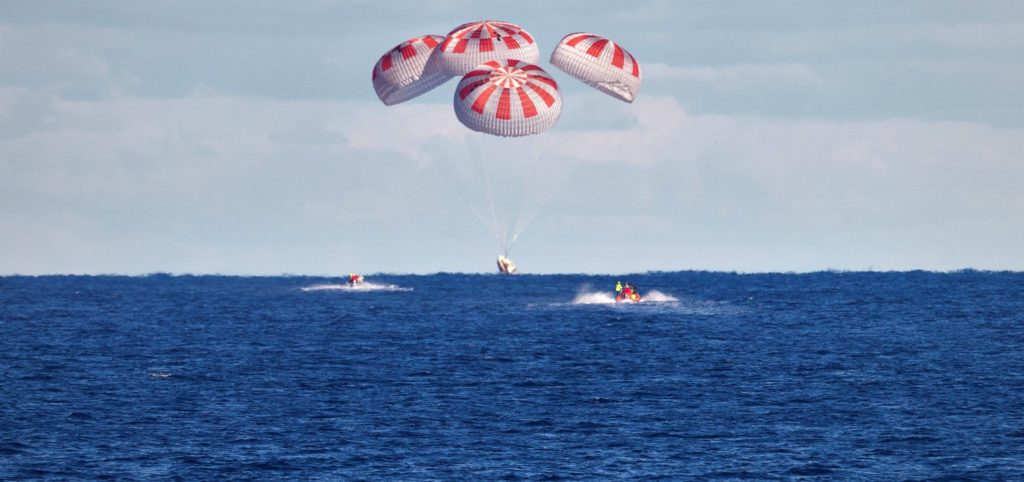

News
SpaceX's Crew Dragon is about to escape a supersonic rocket: here's how to watch live
SpaceX’s Crew Dragon spacecraft is set to attempt to escape a supersonic Falcon 9 in what will likely be the first intentional in-flight destruction of an orbital-class rocket in decades.
Known as an In-Flight Abort test, Crew Dragon’s second test flight is guaranteed to be spectacular and will thankfully be streamed live by both NASA and SpaceX. Scheduled to lift off no earlier than 8 am EST (13:00 UTC), January 18th, the IFA could also be Crew Dragon’s last uncrewed launch ever, hopefully paving the way for its first orbital flight with NASA astronauts on board just a few months from now.
For now, SpaceX’s primary focus with the IFA test is to prove that Crew Dragon can protect passengers and cargo even in the unlikely event that Falcon 9 fails in flight – after liftoff but before the spacecraft has separated from the rocket.
After several months of delays brought on by the explosion of Crew Dragon capsule C201 in April 2019 and an additional two-week slip from NASA’s first public launch date, Falcon 9 booster (B1046) and Crew Dragon capsule C205 have both completed static fire tests of their respective rocket engines and rolled out to Pad 39A on January 16th.
After at least half a year of investigation and a similar period spent redesigning and requalifying a subsection of the high-pressure propellant plumbing that feeds Crew Dragon’s SuperDraco abort thrusters, new capsule C205 successfully fired up a handful of Draco maneuvering thrusters and all 8 of its SuperDracos abort engines, simulating the burns it will have to perform during Saturday’s IFA test.

According to NASA and SpaceX, the ~48 hours between rollout and liftoff have been used to perform a dry run for future NASA astronaut launches, more or less exactly replicating the processes that will soon be used for real. Of course, Demo-2 astronauts Bob Behnken and Doug Hurley didn’t actually board the Crew Dragon spacecraft (its interior is unfinished) and will certainly not be on board come liftoff, but everything up to the point of spacecraft ingress was performed as if they will be.
Audiences will likely be treated to a rare view from inside SpaceX’s flight operations center, recently permanently relocated to Firing Room 4 of NASA’s Flight Control Center (FCC) – a facility with substantial historical ties to US human spaceflight. It was last utilized as part of Crew Dragon’s inaugural orbital launch – “Demo-1” – in March 2019.

Approximately 90 seconds after liftoff, shortly after a point of maximum aerodynamic stress called Max Q, Crew Dragon will ignite its SuperDraco abort thrusters in an attempt to prove that it can whisk astronauts to safety in even a near-worst-case scenario. After a 10-second SuperDraco burn, the spacecraft will have to stabilize itself, reenter the bulk of Earth’s atmosphere, and deploy four main parachutes for a gentle splashdown in the Atlantic Ocean.
A combined SpaceX and USAF team will recover the hopefully-intact spacecraft from the ocean, likely using the opportunity to once again simulate the process of recovering a crewed Crew Dragon and safely extracting the NASA astronauts strapped inside it.

Falcon 9 booster B1046 is expected to be “destroyed in Dragon fire”, according to SpaceX CEO Elon Musk. The Crew Dragon capsule will jettison mid-flight, leaving B1046 open to extremely abnormal aerodynamic stress that will likely tear it and the upper stage apart. NASA says SpaceX will attempt to recover as much of the expected rocket debris as possible.
Crew Dragon’s IFA test has a four-hour launch window with liftoff targeted no earlier than (NET) 8 am EST (13:00 UTC), January 18th. For a variety of reasons, this mission is uniquely susceptible to weather both at and around the launch pad and stands a good chance of slipping much later into the window, and backups are available at the same time on Sunday and Monday.
Regardless, SpaceX will provide live coverage of the test whenever it does launch, beginning around 15 minutes prior to liftoff. Teslarati photographer Richard Angle and reporter Jamie Groh will be on-site to document the events of Crew Dragon crucial – and likely spectacular – flight test.
Check out Teslarati’s Marketplace! We offer Tesla accessories, including for the Tesla Cybertruck and Tesla Model 3.
News
Tesla debuts hands-free Grok AI with update 2025.26: What you need to know
All new Tesla vehicles delivered on or after July 12, 2025, will include Grok AI out of the box

Tesla has begun rolling out Grok, an in-car conversational AI assistant developed by xAI, to eligible vehicles starting July 12. The feature marks the most direct integration yet between Elon Musk’s artificial intelligence startup and Tesla’s consumer product lineup, offering drivers hands-free access to a chat-style companion while on the road.
Grok comes pre-installed on new vehicles
According to Tesla’s FAQ page for the feature, all new vehicles delivered on or after July 12, 2025, will include Grok AI out of the box. Owners of older vehicles may gain access through an over-the-air update, provided their vehicle meets a few hardware and software requirements.
Specifically, Grok is currently only supported on Tesla models equipped with an AMD infotainment processor and running vehicle software version 2025.26 and higher. Compatible models include the Model S, Model 3, Model X, Model Y, and Cybertruck. A Premium Connectivity subscription or active Wi-Fi connection is also required.
Tesla notes that additional vehicle compatibility may arrive in future software updates.
Grok’s features and limitations for now
Drivers can engage with Grok using the App Launcher or by pressing and holding the voice command button on the steering wheel. Grok is designed to answer questions and hold conversations using natural language, offering responses tailored to its chosen personality—ranging from “Storyteller” to the more eccentric “Unhinged.”
For fun, Tesla posted a demonstration of Grok likely running on “Unhinged” talking about what it would do to Optimus when they are on a date, much to the shock of the humanoid robot’s official social media account.
It should be noted, however, that Grok cannot currently issue commands to the vehicle itself, at least for now. Traditional voice commands for tasks like climate control, navigation, or media remain separate from Grok as of writing.
The feature is being released in Beta and does not require a Grok account or xAI subscription to activate, although that policy may change over time.
Grok privacy and in-car experience
Tesla emphasizes that interactions with Grok are securely processed by xAI and not linked to a user’s Tesla account or vehicle. Conversations remain anonymous unless a user signs into Grok separately to sync their history across devices.
Tesla has also begun promoting Grok directly on its official vehicle webpages, showcasing the feature as part of its in-car experience, further highlighting the company’s increasing focus on AI and infotainment features on its all-electric vehicles.
News
Tesla cleared in Canada EV rebate investigation
Tesla has been cleared in an investigation into the company’s staggering number of EV rebate claims in Canada in January.

Canadian officials have cleared Tesla following an investigation into a large number of claims submitted to the country’s electric vehicle (EV) rebates earlier this year.
Transport Canada has ruled that there was no evidence of fraud after Tesla submitted 8,653 EV rebate claims for the country’s Incentives for Zero-Emission Vehicles (iZEV) program, as detailed in a report on Friday from The Globe and Mail. Despite the huge number of claims, Canadian authorities have found that the figure represented vehicles that had been delivered prior to the submission deadline for the program.
According to Transport Minister Chrystia Freeland, the claims “were determined to legitimately represent cars sold before January 12,” which was the final day for OEMs to submit these claims before the government suspended the program.
Upon initial reporting of the Tesla claims submitted in January, it was estimated that they were valued at around $43 million. In March, Freeland and Transport Canada opened the investigation into Tesla, noting that they would be freezing the rebate payments until the claims were found to be valid.
READ MORE ON ELECTRIC VEHICLES: EVs getting cleaner more quickly than expected in Europe: study
Huw Williams, Canadian Automobile Dealers Association Public Affairs Director, accepted the results of the investigation, while also questioning how Tesla knew to submit the claims that weekend, just before the program ran out.
“I think there’s a larger question as to how Tesla knew to run those through on that weekend,” Williams said. “It doesn’t appear to me that we have an investigation into any communication between Transport Canada and Tesla, between officials who may have shared information inappropriately.”
Tesla sales have been down in Canada for the first half of this year, amidst turmoil between the country and the Trump administration’s tariffs. Although Elon Musk has since stepped back from his role with the administration, a number of companies and officials in Canada were calling for a boycott of Tesla’s vehicles earlier this year, due in part to his association with Trump.
News
Tesla Semis to get 18 new Megachargers at this PepsiCo plant
PepsiCo is set to add more Tesla Semi Megachargers, this time at a facility in North Carolina.

Tesla partner PepsiCo is set to build new Semi charging stations at one of its manufacturing sites, as revealed in new permitting plans shared this week.
On Friday, Tesla charging station scout MarcoRP shared plans on X for 18 Semi Megacharging stalls at PepsiCo’s facility in Charlotte, North Carolina, coming as the latest update plans for the company’s increasingly electrified fleet. The stalls are set to be built side by side, along with three Tesla Megapack grid-scale battery systems.
The plans also note the faster charging speeds for the chargers, which can charge the Class 8 Semi at speeds of up to 1MW. Tesla says that the speed can charge the Semi back to roughly 70 percent in around 30 minutes.
You can see the site plans for the PepsiCo North Carolina Megacharger below.

Credit: PepsiCo (via MarcoRPi1 on X)

Credit: PepsiCo (via MarcoRPi1 on X)
READ MORE ON THE TESLA SEMI: Tesla to build Semi Megacharger station in Southern California
PepsiCo’s Tesla Semi fleet, other Megachargers, and initial tests and deliveries
PepsiCo was the first external customer to take delivery of Tesla’s Semis back in 2023, starting with just an initial order of 15. Since then, the company has continued to expand the fleet, recently taking delivery of an additional 50 units in California. The PepsiCo fleet was up to around 86 units as of last year, according to statements from Semi Senior Manager Dan Priestley.
Additionally, the company has similar Megachargers at its facilities in Modesto, Sacramento, and Fresno, California, and Tesla also submitted plans for approval to build 12 new Megacharging stalls in Los Angeles County.
Over the past couple of years, Tesla has also been delivering the electric Class 8 units to a number of other companies for pilot programs, and Priestley shared some results from PepsiCo’s initial Semi tests last year. Notably, the executive spoke with a handful of PepsiCo workers who said they really liked the Semi and wouldn’t plan on going back to diesel trucks.
The company is also nearing completion of a higher-volume Semi plant at its Gigafactory in Nevada, which is expected to eventually have an annual production capacity of 50,000 Semi units.
Tesla executive teases plan to further electrify supply chain
-

 Elon Musk2 weeks ago
Elon Musk2 weeks agoTesla investors will be shocked by Jim Cramer’s latest assessment
-

 Elon Musk2 days ago
Elon Musk2 days agoxAI launches Grok 4 with new $300/month SuperGrok Heavy subscription
-

 Elon Musk5 days ago
Elon Musk5 days agoElon Musk confirms Grok 4 launch on July 9 with livestream event
-

 News1 week ago
News1 week agoTesla Model 3 ranks as the safest new car in Europe for 2025, per Euro NCAP tests
-

 Elon Musk2 weeks ago
Elon Musk2 weeks agoA Tesla just delivered itself to a customer autonomously, Elon Musk confirms
-

 Elon Musk1 week ago
Elon Musk1 week agoxAI’s Memphis data center receives air permit despite community criticism
-

 News2 weeks ago
News2 weeks agoXiaomi CEO congratulates Tesla on first FSD delivery: “We have to continue learning!”
-

 News2 weeks ago
News2 weeks agoTesla sees explosive sales growth in UK, Spain, and Netherlands in June



















